Are you tired of tossing money into the vast media landscape with little to show for it? You’re not the only one.
Media auditing might sound like something that’s reserved for big corporations. Yet it’s accessible (and beneficial) for businesses of all sizes. After all, global digital ad spend is set to reach $870.85 billion dollars by 2027. With that kind of investment, you need to make sure every dollar is well-spent.
Media auditing helps you do just that.
At its core, media auditing is a systematic evaluation of your media channels, strategies, and spends to make sure they're aligned with your business goals.
Media Auditing: Defined
Although it sounds complex, media auditing is simply the process of looking thoroughly at your media buying and media planning processes. You’re trying to determine whether your media investments are delivering the desired results.
Think of it as a health check-up for your media strategy, making sure everything is in tip-top shape and aligned with your business objectives.
Not all media audits are created equal. Depending on your business needs, you may opt for different types of media performance audits:
- Digital Media Audits: Focus on evaluating your online presence, including display ads, search engine marketing, and programmatic advertising.
- Traditional Media Audits: Analyze traditional media channels like TV, radio, and print to ensure optimal placement and cost-effectiveness with your digital marketing strategies.
- Social Media Audits: Examine your social media strategy, content performance, and audience engagement to figure out what’s working, what’s not, and how you can refine your strategy to better reach your demographic.
A media auditor, or media agencies, serves as the Sherlock Holmes of your media strategy, looking at every detail to discover opportunities for improvement (and inefficiencies). We’ll bring objectivity and expertise to the table to help you create a template for data-driven decisions without delay.
Why Media Auditing is Essential for Business
At the heart of media auditing lies the promise of maximizing ROI and achieving better results with your media budget.
Good audits shine a light on where you might be squandering your money. You’ll figure out how to reduce or eliminate waste and address inefficiencies. That way, you can make sure your resources are being spent in the most effective places—making sure every penny counts.
They also make it easier for you to set goals when it comes to enhancing media performance. By holding your strategies accountable, you can be on the path toward constant improvement.
Key Components of a Media Audit
So what exactly goes into a successful media audit? Here are the key components:
1. Data Collection and Analysis
The heart of any media audit is data. But don't worry—you won't need a magnifying glass or a detective's hat. Collecting media plans, invoices, and campaign performance metrics is the first step.
You can use tools such as Google Analytics to save yourself some legwork. This will save your sanity and give you extra time to do what matters—analyze all that data you bring in.
Remember, in the world of media, there's no such thing as too much data. The more comprehensive your collection, the better.
2. Benchmarking
Once you've gathered your data, the next step is benchmarking to compare your performance against industry standards. It's like grading yourself with the entire class's scores in mind. To do this, be thoughtful in creating realistic KPIs and benchmarks that are uniquely tailored to your business goals.
For example, if you're a retail business, your key metrics might include cost per acquisition (CPA), return on ad spend (ROAS), or other pricing strategies.
3. Evaluation of Media Buying and Planning
Media buying isn't just about snagging the best deals—it's a strategic dance that will require you to evaluate your current processes and strategies.
Are you getting the best bang for your buck, or are you spending more than necessary? If you're constantly opting for premium slots that don’t yield results, it might be time to rethink your approach to get the best possible media spend optimization.
Don’t forget to scrutinize your ad placements—are they where your target audience hangs out? If you're selling surfboards, placing ads on a skiing website might not be your best move.
Also, keep in mind that when it comes to media channels, variety is the spice of life, but picking the right mix is crucial. Analyze which channels are delivering results and which are merely draining resources. Are your social media ads driving traffic, or are they just collecting likes with no conversions?
For instance, you could discover that your audience loves Instagram but is indifferent to Twitter.
Perfect! Focus your energies on platforms that promise better engagement and conversions.
The goal? Get the most juice out of each media channel while avoiding unnecessary clutter.
4. Creative and Messaging Analysis
Your ad creatives are your sales pitch in visual form. Review them with a critical eye. Are they captivating, engaging, and on-brand? Sometimes, a creative refresh is all it takes to breathe new life into stagnant campaigns.
Strive for a level of synergy between visuals and message, but make sure you’re consistent. Nothing screams professionalism like brand consistency. Your messaging should be seamless across every platform.
Think Coca-Cola. They don’t just sell soda—they sell happiness—and their branding reflects this across every touchpoint. Make sure every piece of content reinforces your brand values and vision.
5. Compliance and Transparency
The advertising world isn’t the Wild West—there are rules to follow. You need to make sure your campaigns adhere to legal regulations and industry standards, as not doing so can lead to hefty fines and reputational damage.
Stay updated with policies from organizations like the Advertising Standards Authority (ASA) or the Interactive Advertising Bureau (IAB).
You should also consider employing blockchain technology for its transparency and traceability features. It’s a game-changer in ensuring all media transactions are visible and verifiable.
Don’t be afraid to set aside time for a contract compliance audit, focusing specifically on compliance in your media audit process above all else.
Steps to Conduct a Media Audit
Now that we've piqued your interest in media auditing, let's break down the steps involved in the media audit process.
1. Define the Scope and Objectives of the Audit
Before embarking on a media audit, you need to lay the groundwork for successful media management.
Start by defining the scope and objectives of the audit. Once you've set your goals, assemble a dedicated audit team and gather the necessary resources.
Whether you're looking to uncover cost savings, improve targeting, or enhance campaign performance, clarity in your objectives will guide the entire process.
Remember, having the right team in place is an important piece of a successful media audit. This team should possess a mix of analytical skills, industry knowledge, and attention to detail.
2. Data Collection
Data is the lifeblood of a media audit, and collecting accurate and comprehensive information is essential. Gather all necessary documents, such as contracts, invoices, performance reports, and media plans. Leave no stone unturned!
Don’t be afraid to leverage technology to your advantage by using tools designed for media auditing.
3. Analysis and Benchmarking
Once your data is in hand, it's time to roll up your sleeves and start analyzing. Compare your findings against industry benchmarks and key performance indicators (KPIs) to identify trends, discrepancies, and areas for improvement.
Benchmarks provide a point of reference to gauge your media performance. They help you understand whether your efforts are falling short or exceeding expectations.
4. Reporting and Recommendations
With your in-depth analysis complete, it's time to compile your learnings into a detailed audit report. This report should include actionable recommendations that align with your objectives and provide a clear roadmap for improvement.
A well-prepared report communicates your audit findings effectively. Focus on clarity, conciseness, and relevance to ensure that your stakeholders understand the insights and recommendations.
Your recommendations should be practical and achievable. Whether it's reallocating budget, refining targeting, or renegotiating vendor contracts, your suggestions should align with your overall media strategy.
5. Implementation and Monitoring
The audit doesn't end with the report. Implement the recommended changes and monitor performance to ensure that your efforts yield the desired results. Stay proactive and be prepared to adjust strategies as needed.
Put your recommendations into action and make the necessary adjustments to your media strategy. This could involve reallocating budget, refining targeting parameters, or renegotiating vendor agreements.
Common Challenges in Media Auditing
While media auditing offers significant benefits, it's not without its challenges.
Here are some to watch out for:
- Data Accuracy and Completeness: Accurate and complete data is the foundation of any effective audit. Ensure that you have access to reliable data sources and implement checks to verify data accuracy.
- Resistance from Media Partners: Some media partners may resist the audit process, fearing scrutiny or changes to existing agreements. Clear communication and a collaborative approach can help mitigate resistance and foster cooperation.
- Keeping Up with Industry Standards and Benchmarks: The media landscape is constantly evolving, making it essential to stay updated with industry standards and benchmarks. This ensures that your strategies remain relevant and competitive.
- Ensuring Ongoing Compliance and Transparency: Compliance and transparency are ongoing commitments. Establish protocols for regular audits, maintain clear communication with media partners, and prioritize ethical practices.
Tools of the Trade: Tips for a Successful Media Audit
To conduct a successful media audit, leverage advanced tools and technologies to streamline the process.
First, make sure you regularly schedule audits, since consistency is key to maintaining optimized media spend. Set a schedule for regular audits to ensure that your strategies remain aligned with your objectives.
Next, do your best to stay updated, since the media landscape evolves rapidly. Stay informed about emerging trends, new technologies, and changing consumer behaviors to stay ahead of the competition.
Establish open lines of communication with your media partners. Media transparency and collaboration foster trust and ensure alignment with your goals.
Last but not least, don’t be afraid to leverage cutting-edge tools and technologies to streamline data collection, analysis, and reporting. These tools can provide valuable insights and enhance your advertising efficiency.
Final Thoughts
Media auditing offers a powerful tool for improving campaign performance, enhancing targeting, and holding media partners accountable. By conducting regular audits and leveraging advanced tools, you can uncover hidden opportunities for cost savings and drive your media strategy to new heights.
Ready to take the next step in optimizing your media spend? Book a consultation with Kinetic319 for professional media auditing services and unlock the full potential of your advertising efforts. We’re one of the best media auditing companies and are ready to help you identify your strategy’s pain points—and take your marketing up a notch.
After all, your business deserves nothing less than exceptional results.

